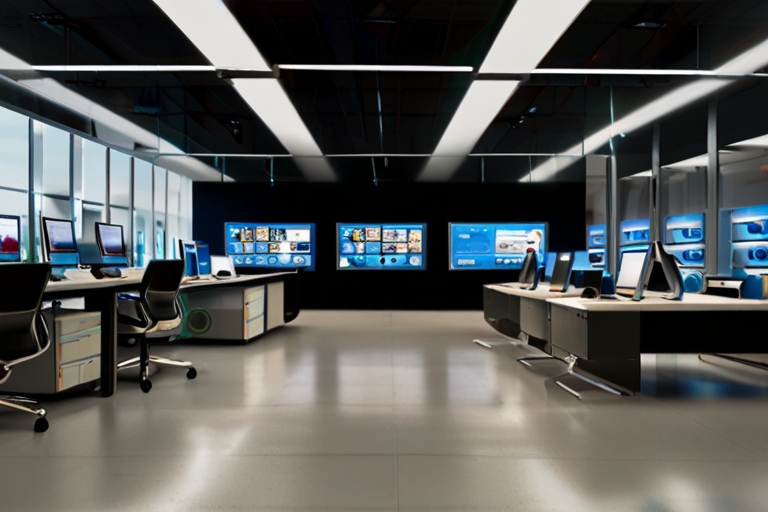Choosing a new computer can be a daunting task, especially with the plethora of options available in today’s market. Whether you’re a student, a professional, or a casual user, finding the right machine to meet your needs is crucial. Here are 7 top tips to guide you through the process and ensure you make the best choice.
1. Define Your Needs
Before diving into specifications and brands, it’s essential to understand what you’ll be using your computer for. Are you a gamer, a graphic designer, or someone who needs a machine for basic tasks like browsing and word processing? Identifying your primary usage will help you focus on the features that matter most.
- Basic Tasks: If you only need a computer for internet browsing, email, and document editing, a machine with modest specifications will suffice.
- Professional Work: For tasks like video editing, programming, or graphic design, you’ll need a more powerful computer with a robust CPU, ample RAM, and a high-quality GPU.
- Gaming: Gamers require top-tier graphics and processing power. Look for computers with the latest GPUs and high refresh rate displays.
2. Choose the Right Operating System
The choice of operating system (OS) can significantly impact your computing experience. The three primary options are Windows, macOS, and Linux.
- Windows: Known for its versatility and wide range of compatible software, Windows is a solid choice for both personal and professional use.
- macOS: Preferred by creative professionals for its sleek design and reliability, macOS offers seamless integration with other Apple products.
- Linux: Ideal for developers and those who prefer open-source software. Linux is highly customisable but might require more technical knowledge.
3. Decide Between a Laptop and a Desktop
The decision between a laptop and a desktop depends largely on your lifestyle and work habits.
- Laptops: Portable and convenient, laptops are perfect for those who need to work on the go. They range from lightweight ultrabooks to powerful gaming laptops.
- Desktops: Typically offering more power for the price, desktops are ideal for stationary setups. They allow for easier upgrades and customisation.
4. Pay Attention to Specifications
When comparing computers, key specifications will determine performance and usability. Focus on the following components:
- CPU (Central Processing Unit): The brain of your computer. For basic tasks, an Intel i3 or AMD Ryzen 3 may be sufficient, while professionals and gamers might require an Intel i7/i9 or AMD Ryzen 7/9.
- RAM (Random Access Memory): Affects the computer’s ability to handle multiple tasks. A minimum of 8GB is recommended for general use, 16GB for more intensive tasks, and 32GB or more for high-end gaming or professional applications.
- Storage: Solid State Drives (SSD) are faster and more reliable than Hard Disk Drives (HDD). Aim for at least 256GB of SSD storage, with additional HDD for bulk storage if necessary.
- GPU (Graphics Processing Unit): Critical for gaming and graphic-intensive tasks. Integrated graphics are fine for basic use, but a dedicated GPU is essential for gaming or professional graphics work.
5. Consider the Display
The quality and size of your computer’s display can greatly enhance your experience.
- Size: Larger screens provide better visibility and multitasking capabilities. Laptops typically range from 13 to 17 inches, while desktops can support much larger monitors.
- Resolution: Higher resolutions offer sharper images. Aim for at least 1920×1080 (Full HD) for general use. Professionals and gamers might prefer 4K displays.
- Refresh Rate: Gamers should look for higher refresh rates (120Hz or more) for smoother gameplay.
6. Look at Connectivity Options
Ensure your computer has all the ports and connectivity options you need.
- USB Ports: Multiple USB 3.0 or USB-C ports are ideal for connecting peripherals.
- HDMI/DisplayPort: Necessary for connecting to external monitors or projectors.
- Wi-Fi and Bluetooth: Ensure the computer supports the latest standards for fast and reliable wireless connections.
7. Set a Budget
Finally, set a realistic budget. While it’s tempting to go for the latest and greatest, you should balance cost with your actual needs.
- Entry-Level: Basic computers for general use can range from £300 to £600.
- Mid-Range: Suitable for professionals and casual gamers, expect to spend between £600 and £1200.
- High-End: For top-tier gaming and professional workstations, prices can exceed £2000.
Conclusion
Choosing the right computer involves a careful consideration of your specific needs, desired features, and budget. By following these seven tips, you’ll be well-equipped to make an informed decision and find a computer that will serve you well for years to come.


